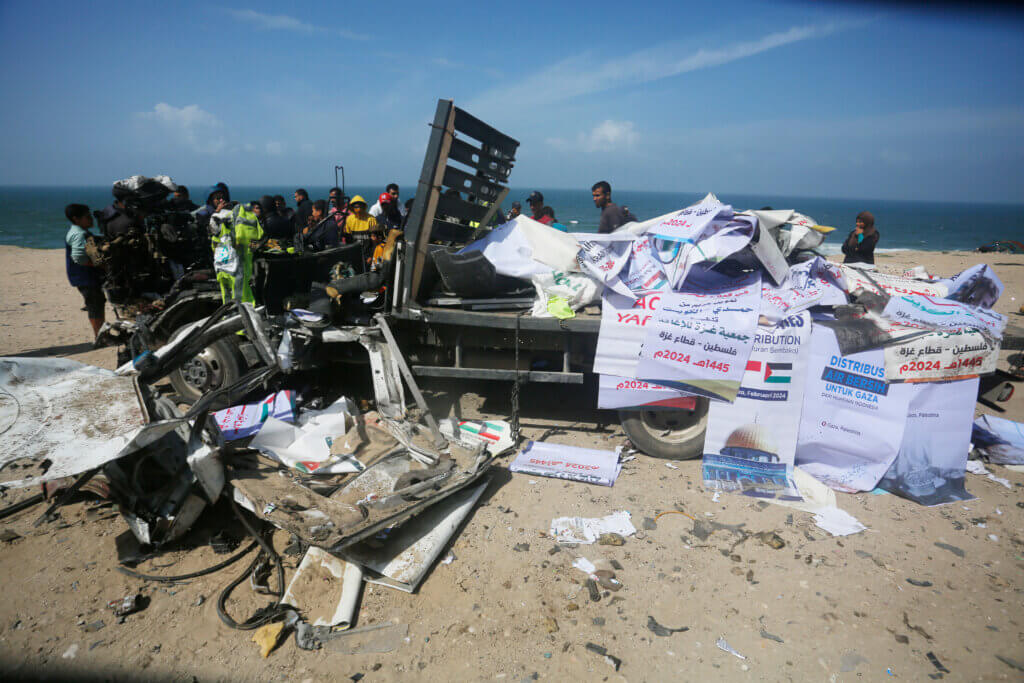On February 29, Israeli forces fired at a crowd of Palestinians seeking aid south of Gaza City, an attack that killed 118 civilians and injured another 750. On March 2, an Israeli airstrike on an aid truck in central Gaza killed at least nine people.
These operations on or around aid distribution areas in Gaza occured as at least one quarter of Gazans, or nearly 576,000 people, “are one step away from famine,” according to a senior UN aid official.
Regional sources report on the events:
Anadolu Ajansi described the incident: “Israeli officials made contacts with multiple local entrepreneurs, requesting their assistance in coordinating private aid convoys to northern Gaza, with Israel offering security support,” but its forces then “shelled a crowd of Palestinians waiting for humanitarian aid.”
The Israeli military asserted that the fatalities and injuries were invoked by a stampede and trampling, according to Al Jazeera. However, “witnesses insisted that the stampede happened only after Israeli troops started firing at people looking for food,” a statement supported by the “large number of gunshot wounds” seen at local hospitals.
The Times of Israel shared that those injured in the attack were transported to Al-Shifa Hospital and Al-Awda Hospital in Gaza City. Survivors spoke to reporters at Al-Shifa, commenting: “When the aid entered, the tank and quadcopter started firing at the people gathered, the people who went to get food for themselves and their children. They started shooting at them… They used tanks, soldiers, aircraft… all were firing towards us.” At Al-Awda, Dr. Mohammed Salha, acting director of the hospital, estimated that 80% of those being treated from the incident had been hit by gunfire.
World leaders called for an investigation into the incident. Arab News reported that “US President Joe Biden — whose government provides billions of dollars in military aid to Israel — said Washington was checking ‘two competing versions’ of the incident.” The White House “later said it had asked Israel to probe the ‘tremendously alarming’ deaths” and Deputy Press Secretary Olivia Dalton said the event “needs to be thoroughly investigated.”
Days later, at least eight Palestinians waiting to receive food aid were killed in an airstrike in Deir Al-Balah in Gaza. The New Arab quoted Gazan Health Ministry spokesperson Ashraf Al-Qudra, who expressed the possibility of a higher number of fatalities: “The occupation forces committed a horrific massacre at the Kuwaiti roundabout in Gaza which claimed the lives of dozens and [left] wounded.”
Al Arabiya explained that the storming of the aid truck and the airstrike occurred against the background of a looming famine in Gaza. The United Nations warned that “famine in the Gaza Strip was almost inevitable,” and the World Health Organization shared that “an aid mission to two hospitals in northern Gaza found horrifying scenes of children dying of starvation, amid dire shortages of food, fuel and medicines.”
Anadolu Ajansi also underlined the challenges to aid allocation in Gaza: “Israel has imposed a crippling blockade on the Gaza Strip, leaving its population, particularly residents of northern Gaza, on the verge of starvation.” According to the UN, “the Israeli war has pushed 85% of Gaza’s population into internal displacement amid acute shortages of food, clean water, and medicine, while 60% of the enclave’s infrastructure has been damaged or destroyed.”
(Banner Image: Ramadan El-Agha/APA Images)
